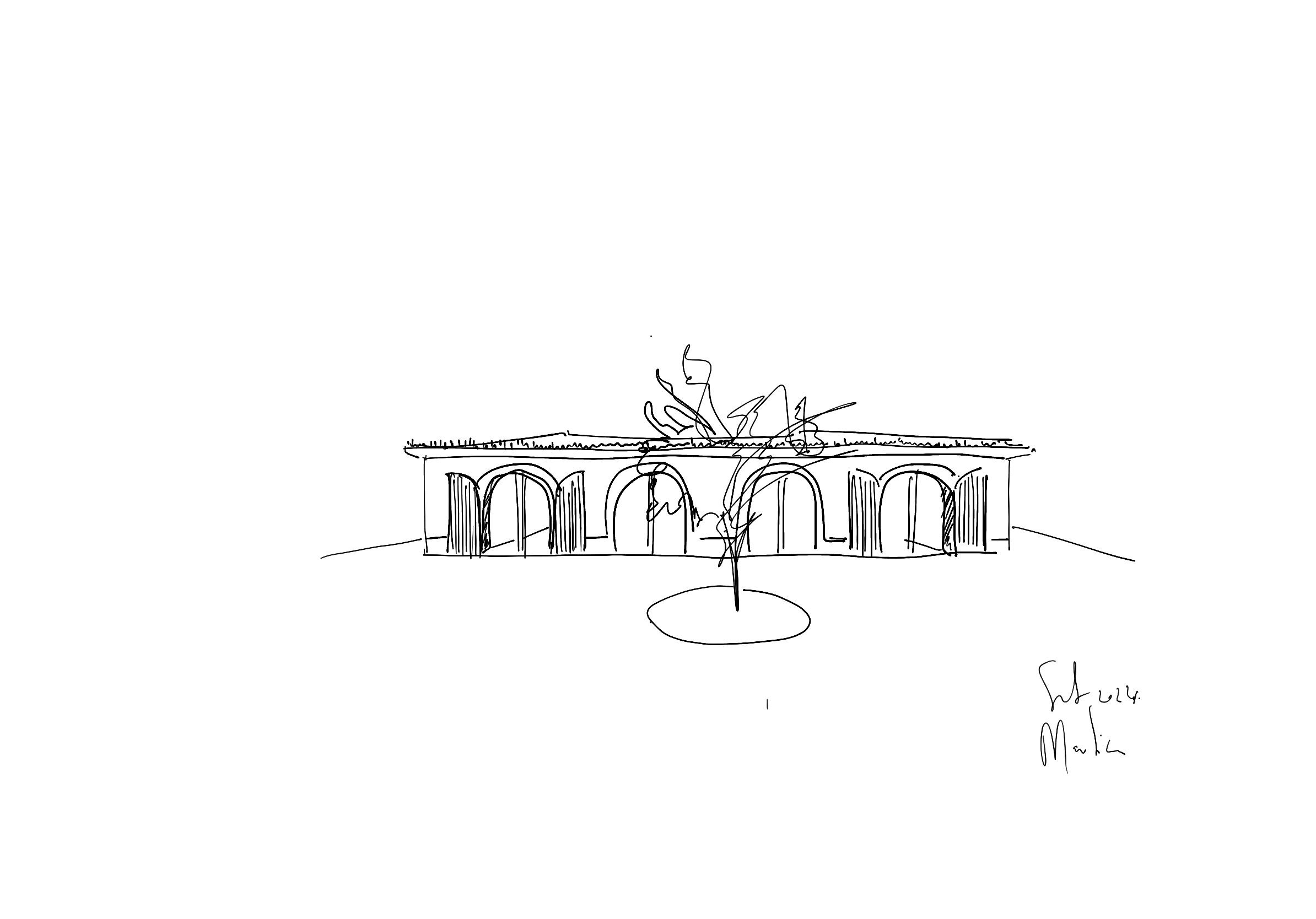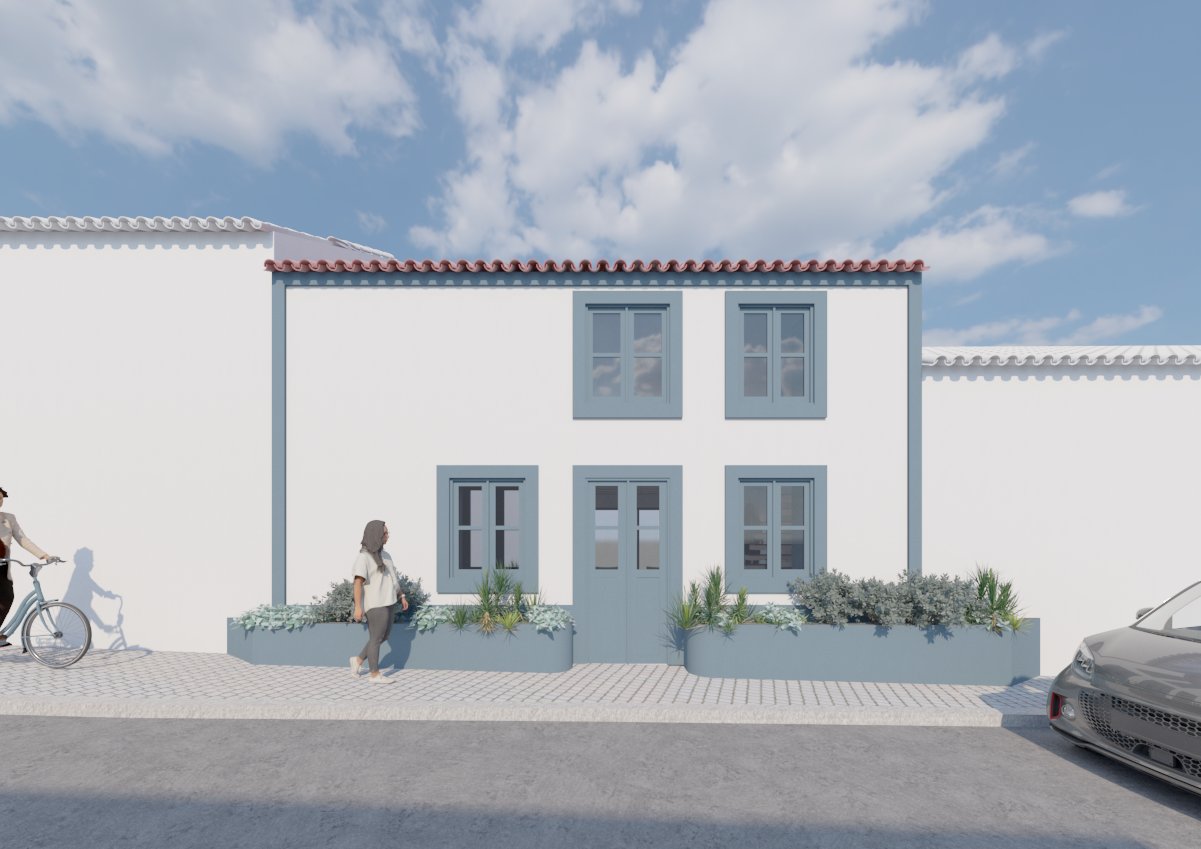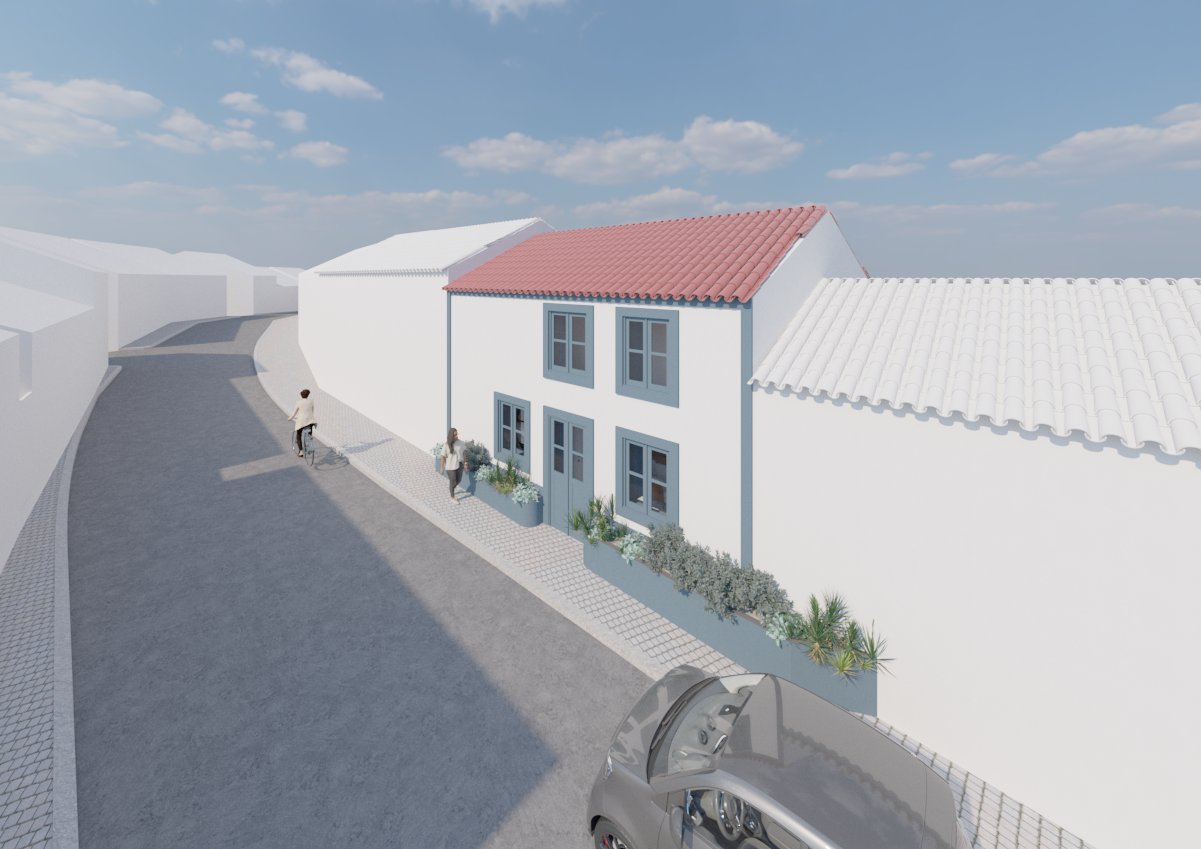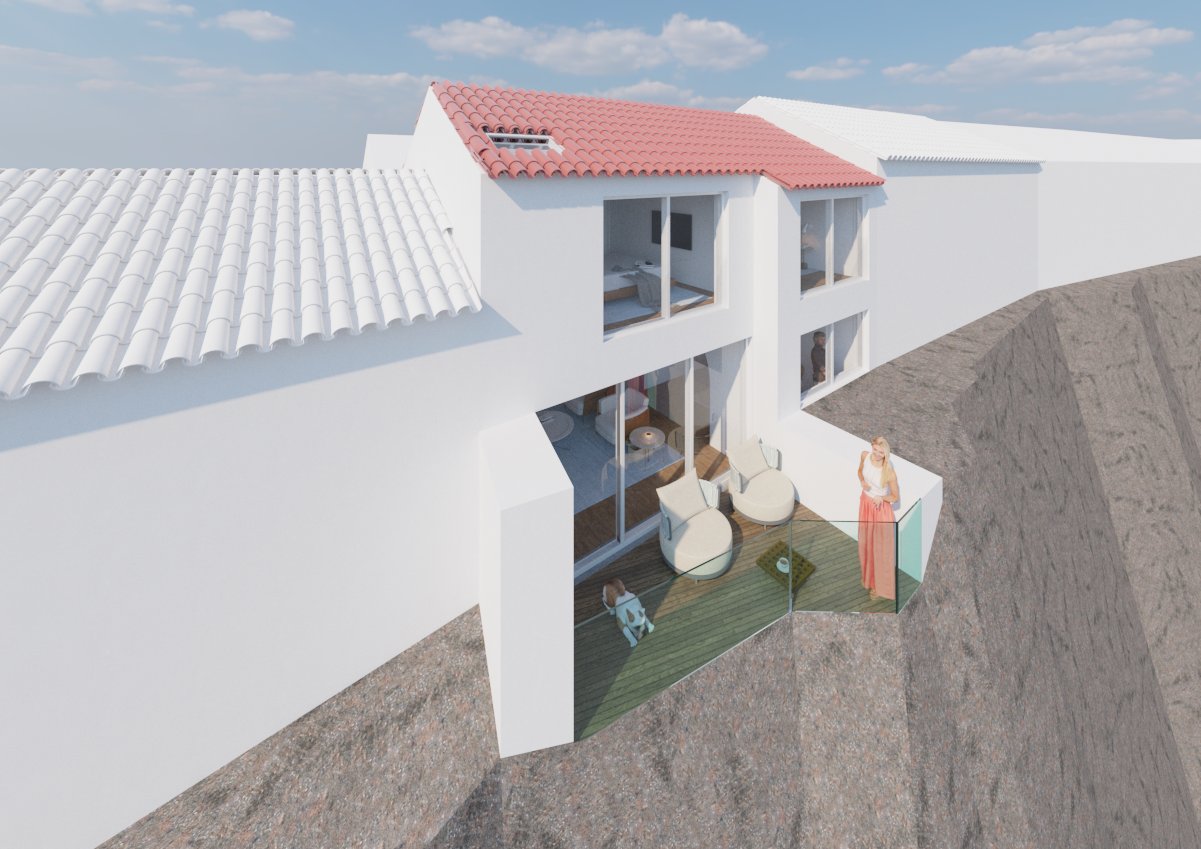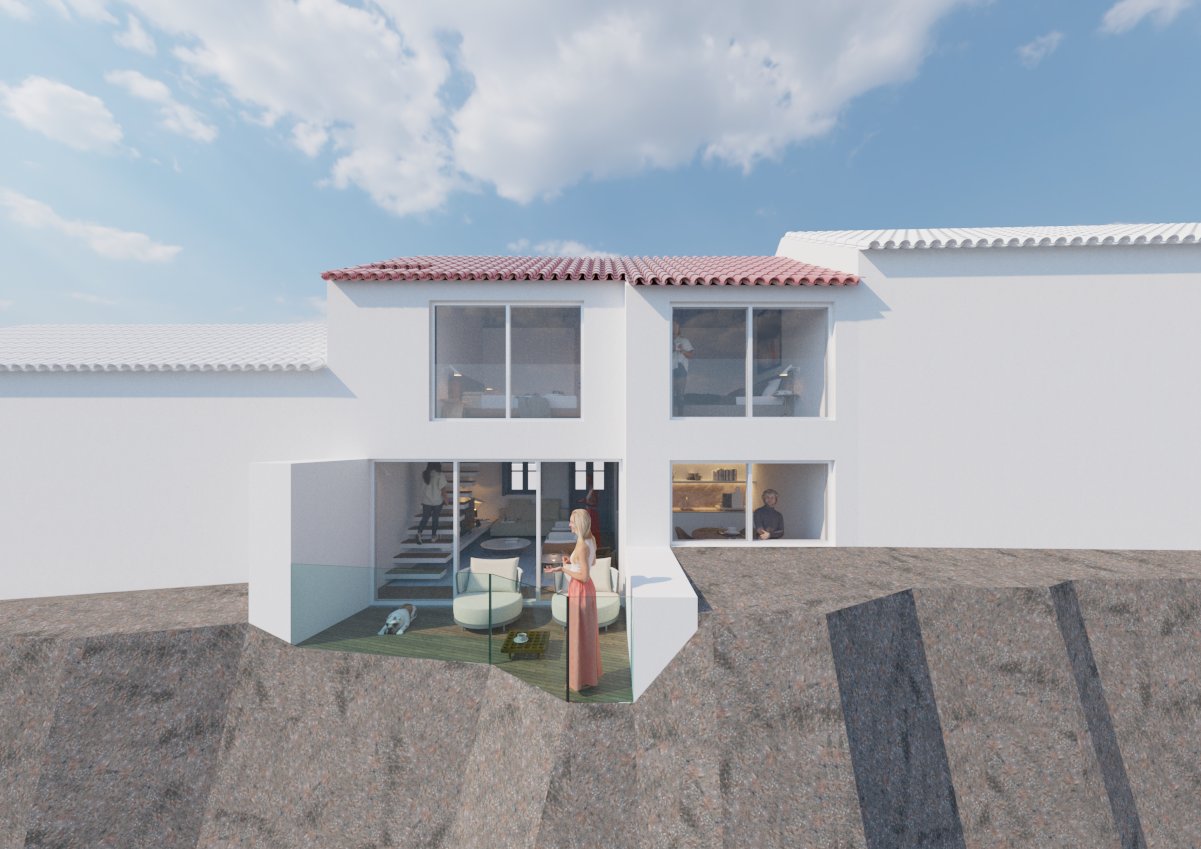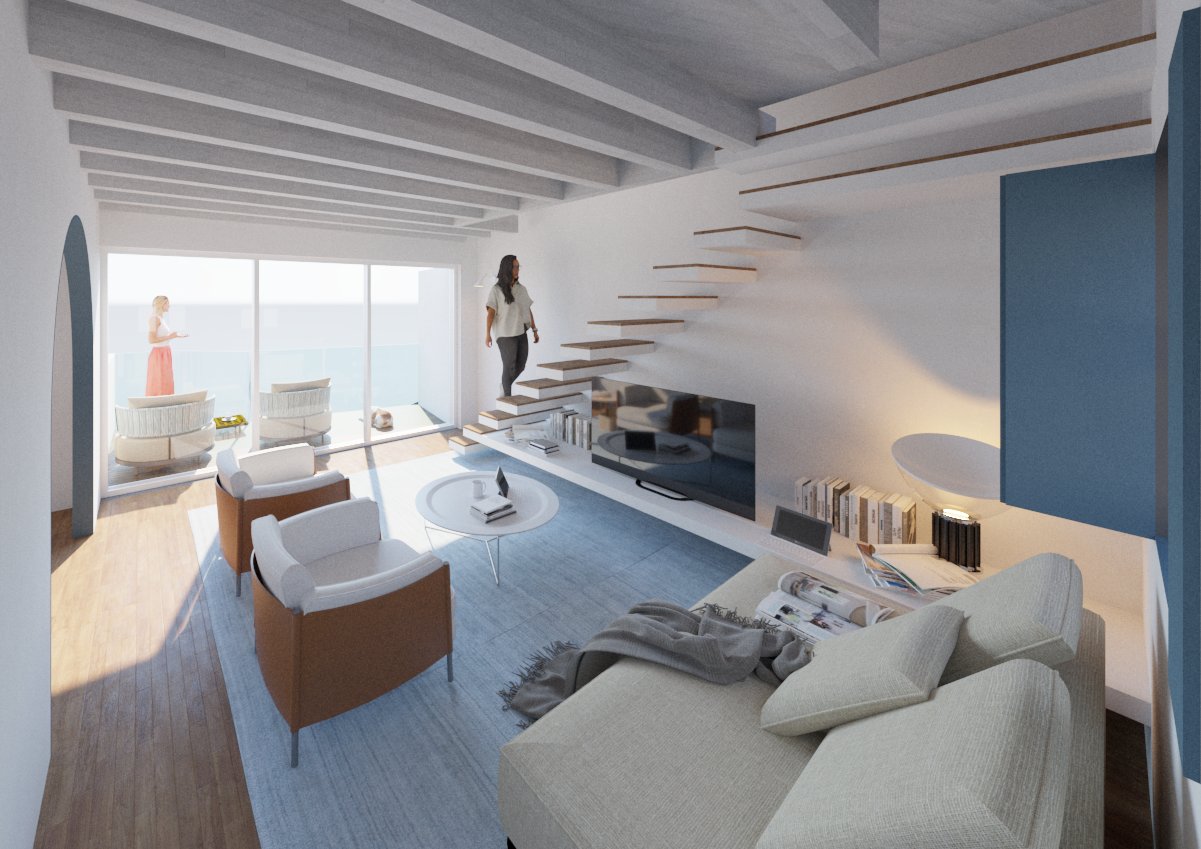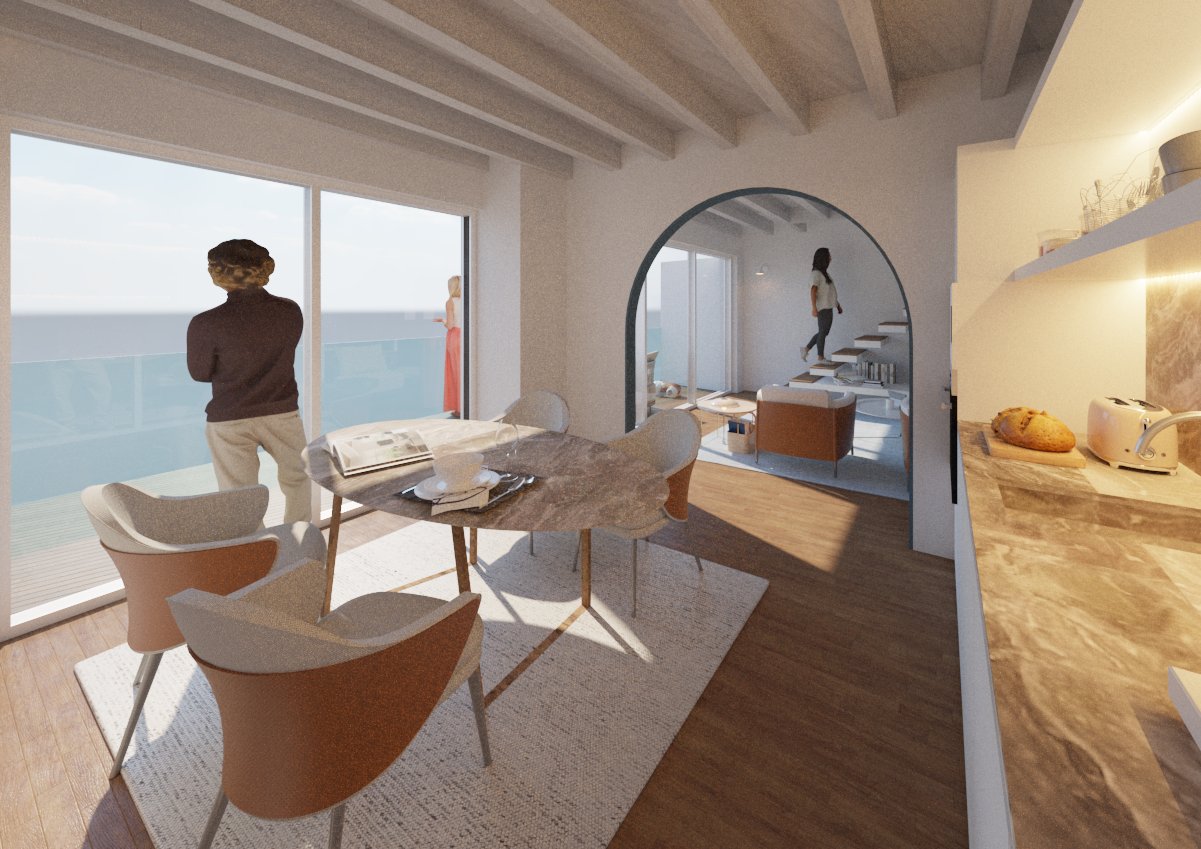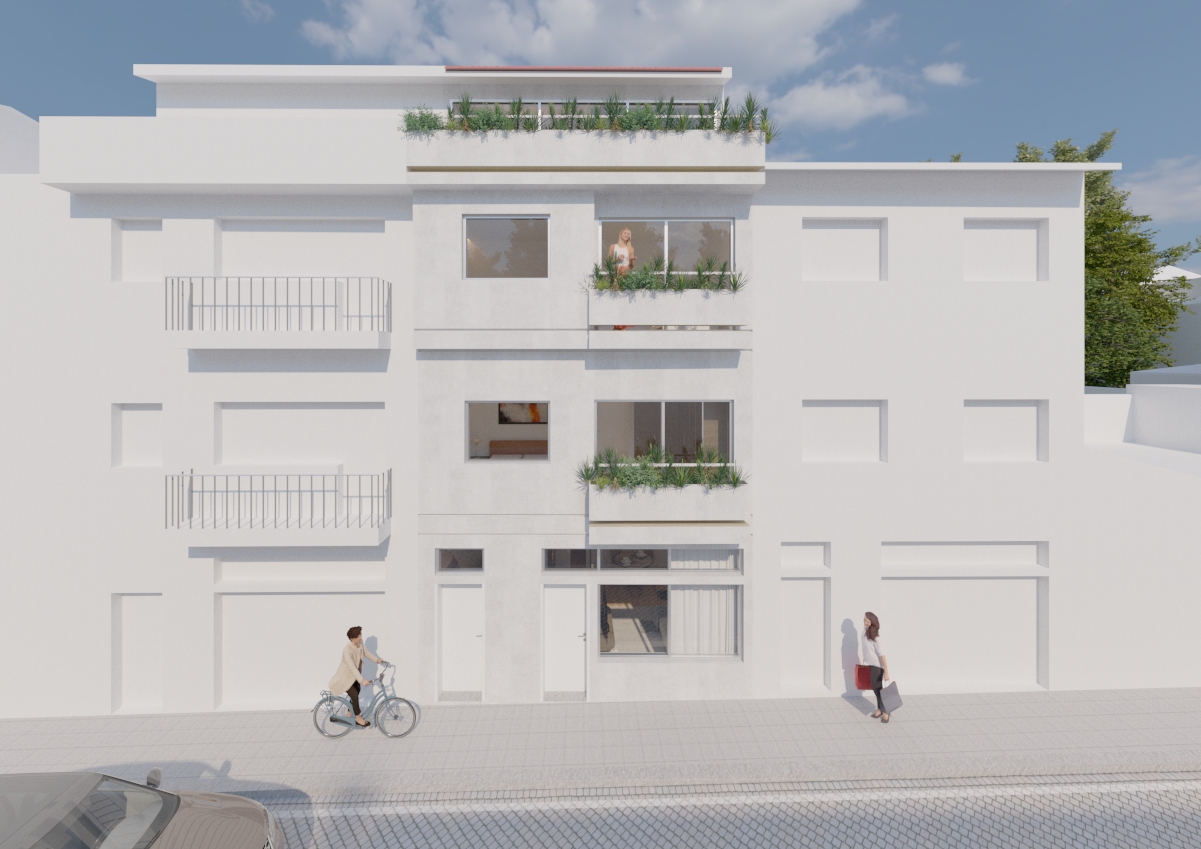
BV7 House Rehabilitation | Calheta
Housing Rehabilitation
Client: Private
Area: 44m2
Team: to be defined
Construction: to be defined
Contractualization: 2024
[In licensing]
The Calheta house was born from listening to the place. A fragment of construction lying dormant between the sea and the street, with just 40m².
A restrained gesture, which aims to do nothing more than respectfully inhabit the clearing that time has left behind. The ocean is there – absolute, continuous. Architecture just needs to open its eyes.
Intervene without disturbing
The silence of the façade
From the street, the house is almost indistinguishable. It retains the thickness of time, the design of the windows, the proportion of the door. We intervened inside, leaving the street intact.
Because architecture is also about being silent and recognizing that sometimes everything is already designed and integrated into the whole.
Where light draws time
Finding the importance of light
We took advantage of the old attic, not as a gesture of expansion, but as an understanding of what was already there, latent. It was a volume hidden under the roof, just waiting to be inhabited by light.
This upper, discreet space now welcomes rest. It’s not a floor. It’s an interval. A contained place, where the sloping ceiling draws time. The slope creates corners of shade and areas of closeness to the sky. There is a window, precisely placed, which offers the lying body the line of the sea. A minimal gesture that transforms the entire space.
Light, coming from above and from the front, doesn’t enter as an effect. It enters as matter. It reveals the textures, marks the rhythm of the day and carries with it the silence of the ocean. The architecture simply excavates – not with demolition, but with care. It removes, empties, shores up. So that what is essential can happen: the presence of the sea, the shelter of the roof, the breath of light.
It is in this balance between what is open and what is protected that the house finds its place. An architecture that doesn’t invent, but listens. That doesn’t add, but reveals.
Where light draws time
Finding the importance of light
We took advantage of the old attic, not as a gesture of expansion, but as an understanding of what was already there, latent. It was a volume hidden under the roof, just waiting to be inhabited by light.
This upper, discreet space now welcomes rest. It’s not a floor. It’s an interval. A contained place, where the sloping ceiling draws time. The slope creates corners of shade and areas of closeness to the sky. There is a window, precisely placed, which offers the lying body the line of the sea. A minimal gesture that transforms the entire space.
Light, coming from above and from the front, doesn’t enter as an effect. It enters as matter. It reveals the textures, marks the rhythm of the day and carries with it the silence of the ocean. The architecture simply excavates – not with demolition, but with care. It removes, empties, shores up. So that what is essential can happen: the presence of the sea, the shelter of the roof, the breath of light.
It is in this balance between what is open and what is protected that the house finds its place. An architecture that doesn’t invent, but listens. That doesn’t add, but reveals.
Precision, use and permanence
Time draws matter
The materials chosen respond directly to the place: lime on the walls, wood on the structural and contact elements, local stone on the foundation and in the most worn areas. We didn’t try to reproduce a past or evoke a traditional image – from the outset, it was a question of continuing a language that time had already written.
The interior was entirely designed by our team. Each plane, each joint, each thickness is the result of careful construction of proportion and use. We opted for a rigorous and functional design, where materiality was evident but never decorative. The wooden surfaces have been treated to withstand intense use and proximity to the sea, but retain the natural reading of grain and imperfection.
The lime walls interact with the humidity in the air and help regulate the interior environment. The light that enters through the front openings passes through these materials and reinforces their presence – more by absorption than by reflection. The stone on the ground floor serves as a thermal and physical base, welcoming footsteps, sand from the beach and everyday gestures.
We worked with materials that not only belong to the place – but that accept ageing as part of their identity. The house was not designed to maintain an unchanging state, but to mature with time, use and climate.
It is in the precision of detail and the continuity of materials that architecture asserts itself. Discreet, but built to the end.
Project Gallery
Unique characteristics that set it apart
1. set on a rocky ocean front
The house is set on a narrow, deep plot, leaning against a rocky front with direct exposure to the Atlantic Ocean. The relationship with the sea is total – frontal, without barriers, with continuous views.
2. Full maintenance of the traditional façade
The façade facing the street has been rigorously preserved: doors and windows retain their original proportions and design. The traditional lime plaster and painted wooden openings respect the urban context of Ribeira Grande.
3. Total openness to the sea
The main intervention takes place on the rear side, where wide, continuous openings have been created to capture the ocean views and light. The recessed window frames allow for a clean reading of the façade and reinforce the feeling of continuity between the interior and exterior.
4. Use of the attic as a living space
The old attic has been transformed into a living space, designed with rigor. The sloping roof defines an intimate environment, with strategically placed openings to guarantee cross ventilation and views of the sea, even when lying down.
5. Interior completely designed by the project team
The entire interior was developed to measure, from the design of the staircase to the fixed furniture and lighting. The formal coherence between elements guarantees visual and functional unity, even in a small space.
6. Material continuity strategies
The choice of lime, wood and stone is not just aesthetic – it meets the criteria of durability, resistance to the sea and coherence with the context. The materials were applied with rigorous construction detail, ensuring continuity between the interior and exterior spaces.
7. Reduced scale
With only 40m², the spatial organization takes advantage of the height and depth of the volume, and each dimension has been designed to optimize circulation, natural light and comfort.
8. Project designed for tourism, without de-characterizing
Although designed for tourism, the house remains rooted in the local identity. There are no exotic or out-of-context solutions – there is just rigorous, silent architecture that is deeply rooted in the place.








